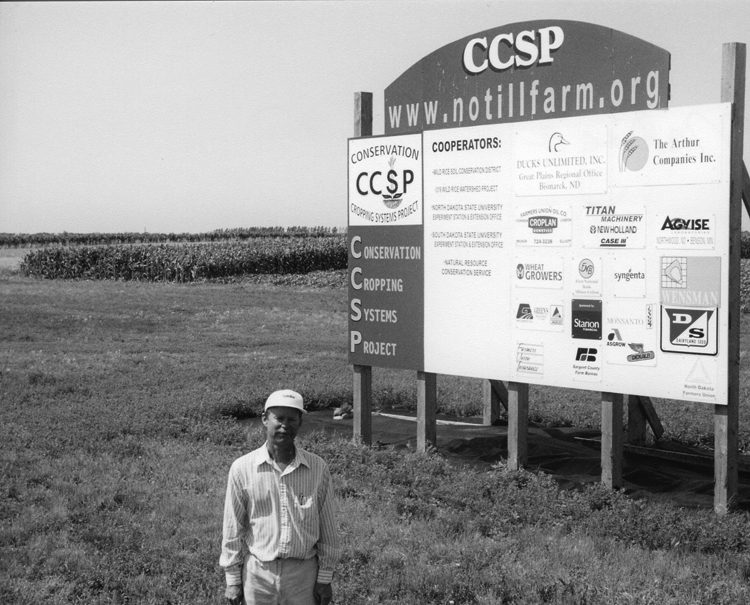No-Till Farmer
Get full access NOW to the most comprehensive, powerful and easy-to-use online resource for no-tillage practices. Just one good idea will pay for your subscription hundreds of times over.

Over the years, I have felt fortunate that I could promote no-tilling through educational work with conservation agencies and farmer organizations. I’ve been a member of my county Soil Conservation District for more than 16 years. I was also a founding member of the Manitoba- North Dakota Zero Tillage Farmers’ Association, which now has hundreds of farmer and industry members.
We had always talked about forming a local no-till group, but nothing happened until 2000. A few growers from southeastern North Dakota and northeastern South Dakota kicked around the idea of setting up a research farm where we could test no-till systems for our own area. The research on no-till closest to our area is done at the Morris Experiment Station in Minnesota, the Dakota Lakes Research Farm near Pierre, S.D., and the USDA’s Agricultural Research Service station near Mandan, N.D. All are 150 to 250 miles away.
We applied to the state health department through the Wild Rice Soil and Water Conservation District for EPA Clean Water Act 319 grant money. The grant would help fund a no-till crop production farm that we would use for data collection as well as an outdoor classroom — a place where producers could get together at annual field days and other times to observe and talk about various conservation farming practices.
The idea earned the agency’s interest and we soon had approval for a 5-year grant providing $70,000 per year in seed money and an official name: the Conservation Cropping Systems Project.
…